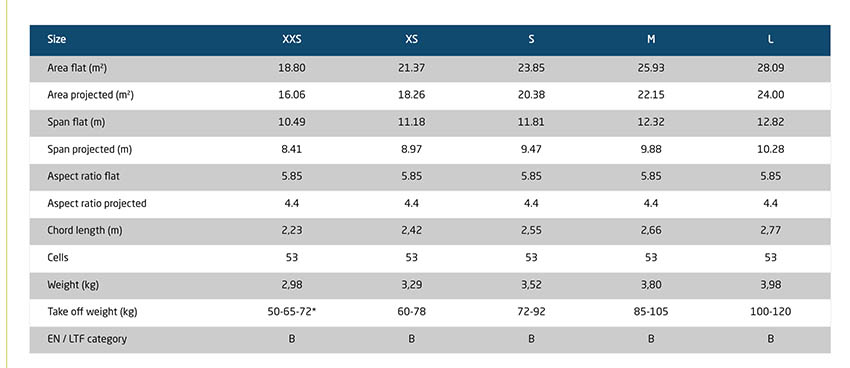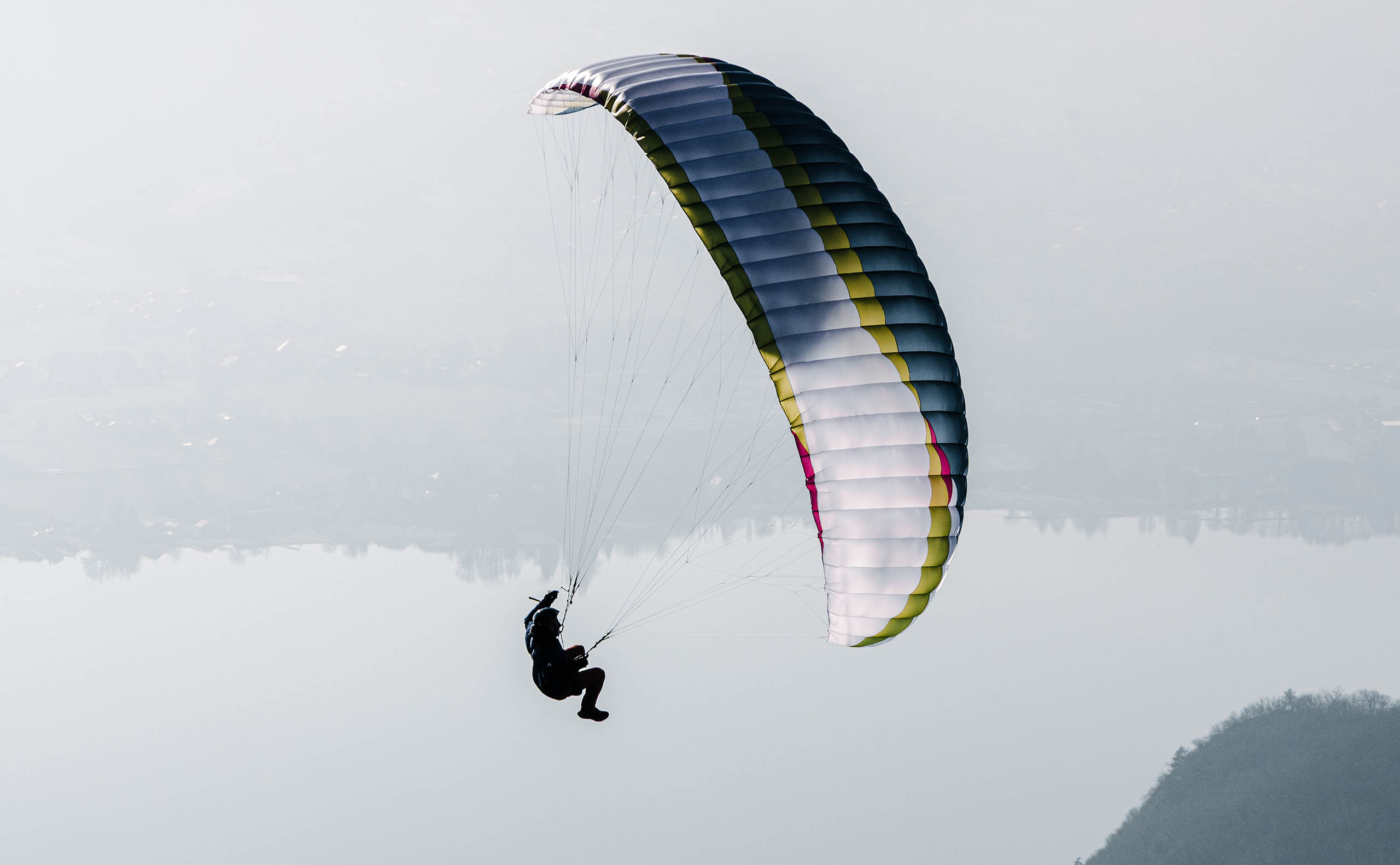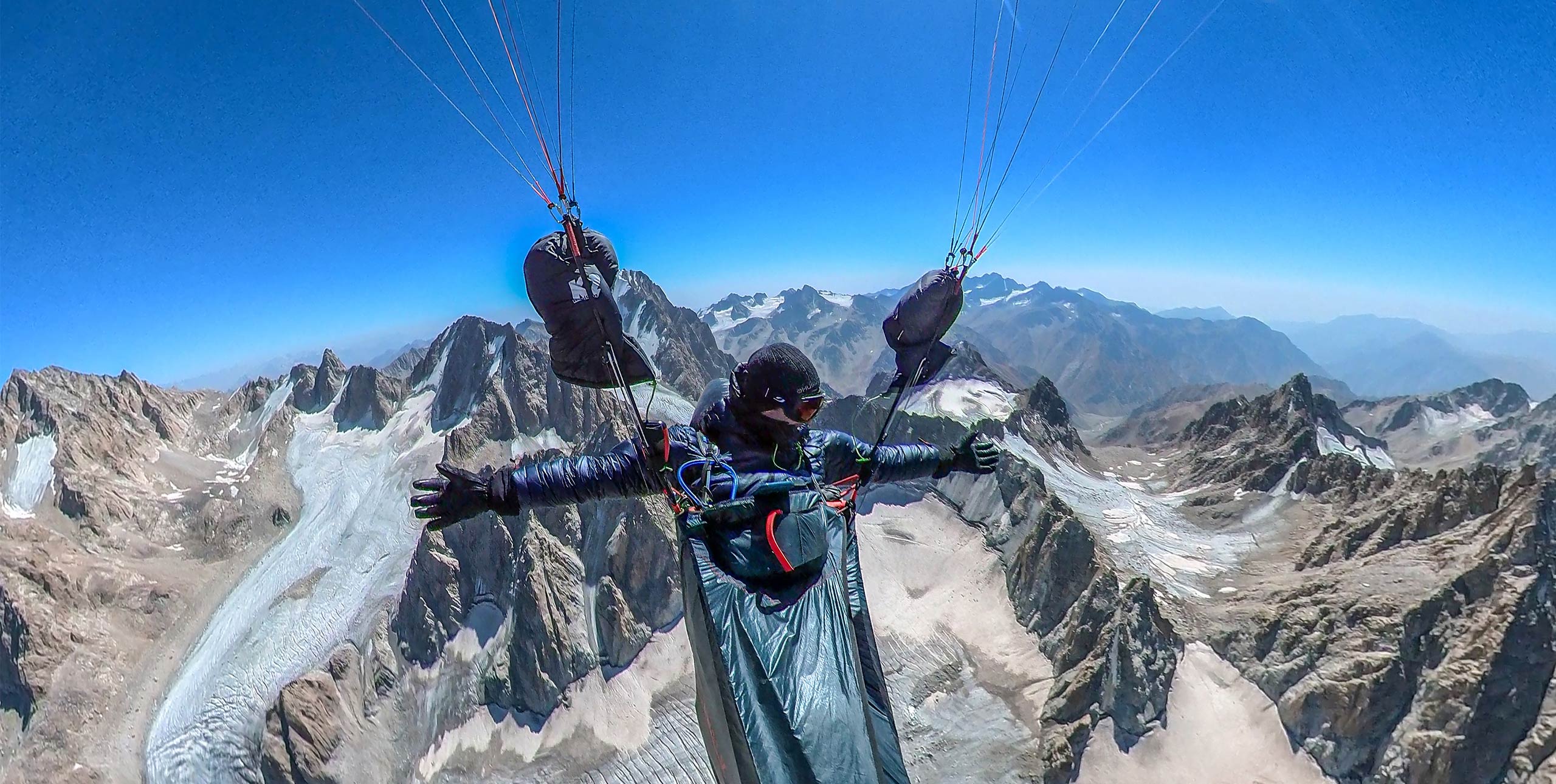
AirDesign have released the Soar 2 – the updated version of their lightweight high-EN B.
Based on the Rise 5, which was announced in March, the Soar 2 is a 2.5-line cross country glider aimed at intermediate and advanced pilots. AirDesign pitch it as an all-rounder, suitable for flying XC, hike-and-fly and expedition or vol-bivouac flying.
A hybrid 2.5-line wing with three lines in the centre and two at the tips, AirDesign’s figures show the glider weighs between 2.98kg and 3.98kg, depending on size. Five sizes are available, covering a total weight range from 50kg to 120kg.

Notably, the glider features winglets, which are in vogue this year with many manufacturers. They are there to help spiral stability and allow designers to build a wing with greater arc.
The glider has a flat aspect ratio of 5.85 with 53 cells, which is typical for a high-EN B wing. To keep the weight down it uses 25 g/m2 material throughout and features 13mm risers and fabric maillons.
Two standard colour schemes are offered. It is also available in custom colours and pilots can design their own using the colour configurator on the AirDesign website.

The Soar, which was released four years ago in March 2020, was a very popular and successful wing for AirDesign, so the Soar 2 has “big shoes to fill” according to designer Stephan Stiegler.
“The first Soar has made so many pilots happy, its successor had big shoes to fill. By implementing new tricks – 2.5 liner, new arc, two pairs of winglets – while keeping its original DNA, we managed to create a glider that will fulfil the expectation of most pilots nowadays.”
Also this week, AirDesign shared a video offering more insight into the Rise 5 (EN B) and its double-winglet design. Stephan Stiegler presents a brief explanation on the “winglet effect”.
During an interview at the Stubai Cup 2024, Stephan explained the original tip winglets are to “improve performance”, but the inner winglets have a different purpose: to control the spiral behaviour by reducing spiral speed and G-force.
Stephan went on to say, by positioning these second winglets further in or out, designers can tune the balance between performance and control. To test this, AirDesign made a wing with a single inner winglet on one side to see what impact it had. Stephan said at Stubai: “Funnily, the side with the winglet was gliding better.”
The Rise 5 was announced earlier this year along with the Volt 5 (EN C) and Hero 2 (EN D).











